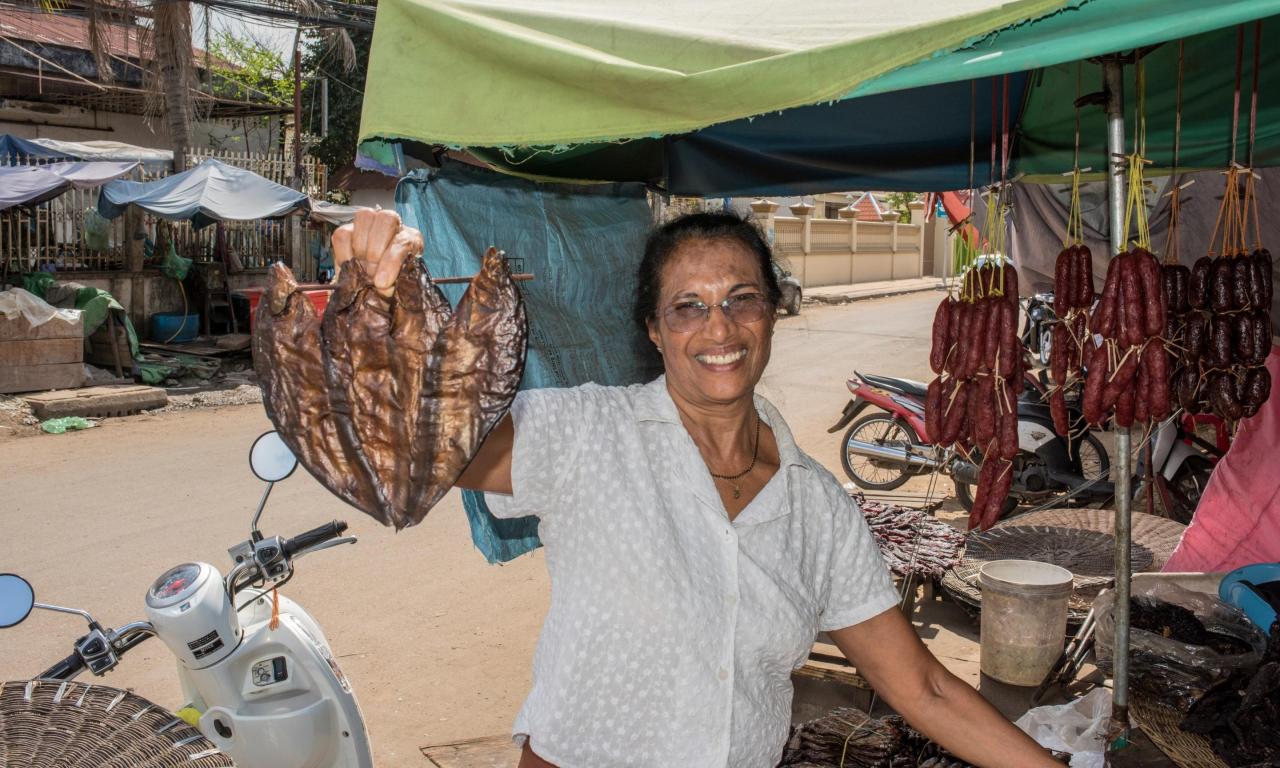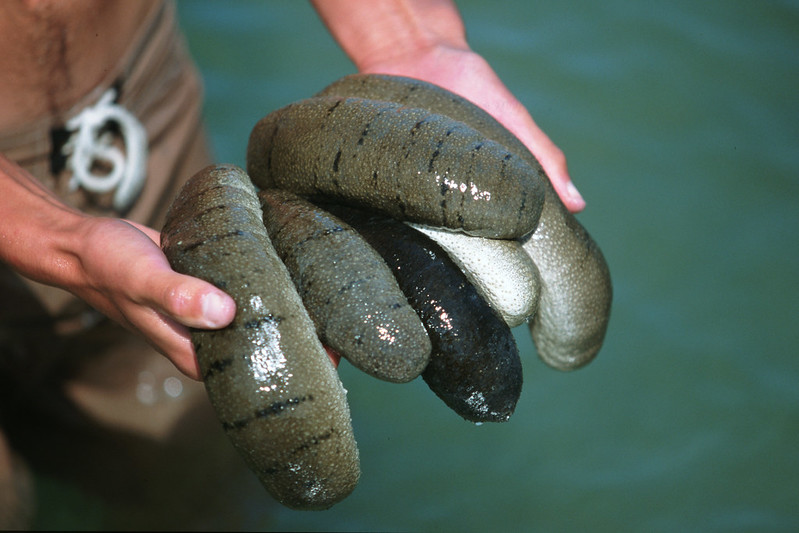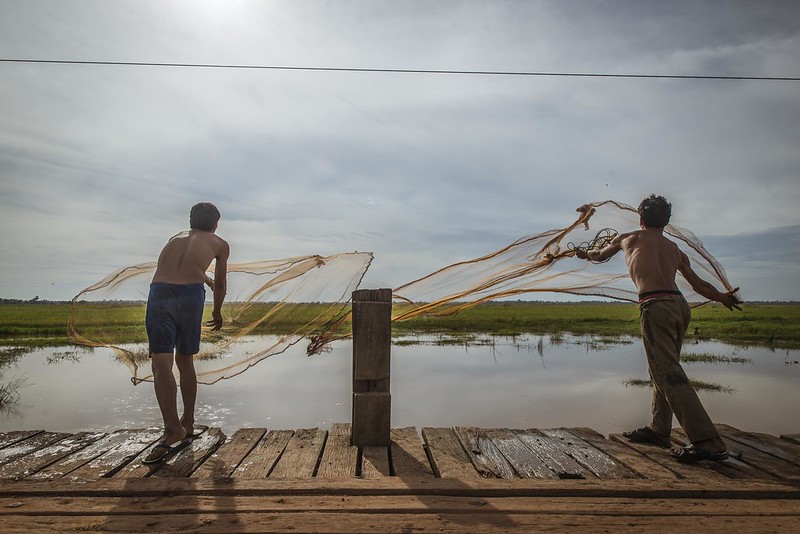
The 2021 World Food Prize Laureate shares how aquatic foods systems can provide six times more food, deliver diverse and comprehensive nutritional benefits and potentially nourish healthy and fulfilling lives and livelihoods, equality and environments. Shakuntala Thilsted urges the prioritization of sustainable and inclusive management and innovations of aquatic food systems in the global food systems research agenda.
Efforts to reduce poverty and malnutrition barely scratch the surface of a diverse aquatic food group offering multiple micronutrients. Water, the world’s most precious resource, is worth at least double in the Global South for its role in preventing hunger as well as thirst.
While many fish and other aquatic foods are fast becoming a delicacy in the Global North, they remain the underappreciated mainstay of diets, cuisines and economies in the southern hemisphere from Bangladesh and Cambodia to Chile and Nigeria.
Shark fin soup and bluefin tuna may have come to symbolise the excesses of global consumption, but aquatic foods like small fish, algae, sea cucumbers and molluscs, represent the most accessible and valuable form of nutrition for hundreds of millions of people, as well as profitable and sustainable ways to earn a living.

Yet efforts to reduce poverty and malnutrition, which afflicts almost 2.5 billion people worldwide, have barely scratched the surface of the enormously diverse aquatic food group that offers multiple micronutrients vital for human development and health, and multiple income opportunities from their production, supply and consumption.
Until governments and public authorities devote more investment and resources towards research to sustainably develop the aquatic foods sector, the world will continue to allow vital nutrients to slip through the hands of the malnourished, missing a golden opportunity to transform food systems for the poorest.
For decades, food systems have been primarily focused on land-based production, and food aid has most commonly taken the form of staple grains like rice and maize.
But there are signs this is finally starting to change, a shift led by the World Food Prize Foundation, which this year made me only the second aquatic foods researcher to be named a World Food Prize Laureate and the first since 2005.
The world is beginning to wake up to the unmatched potential of aquatic foods to improve nutrition at scale. For example, increasing the supply of marine and freshwater foods by eight per cent could prevent 166 million cases of micronutrient deficiencies by 2030, with mussels offering 76 times more vitamin B12 and carps nine times more calcium than chicken.
To fully unlock these benefits, governments and public authorities must start by linking aquatic foods to nutrition and public health policies.

It was only in April this year that UN Nutrition published its first discussion paper on aquatic foods but these insights must now be developed and incorporated in public policy.
For example, dried fish-based products such as fish powder and fish chutneys offer an accessible, affordable and culturally appropriate way to include more micronutrients in the daily meals of children and women. Such products also offer new opportunities for women, who often lack the resources needed to participate in capture fisheries, to make a living.
Including aquatic foods in national food-based dietary guidelines will ensure that these products are prioritised in school feeding programs and mother-child health initiatives that reach the most vulnerable.
Secondly, governments can support the inclusive and sustainable growth of aquatic food systems by prioritising policies and investments that support small-scale fisheries and aquaculture.
Small innovations have big impacts for small-scale producers, processors and traders, many of whom are women and often miss out on subsidies, water rights and access to innovations.
In Bangladesh, we see how prioritising nutrition-sensitive approaches that promote the pond polyculture systems - where diverse small fish are grown with larger carp species - in household ponds boosts economic opportunities while improving access to nutritious foods.
In Malawi, initiatives that encourage the uptake of low-tech improvements such as communal tents for drying small fish and solar-powered freezers can also improve both nutritional quality and reduce food loss and waste and improve the livelihoods of women.

Finally, aquatic food systems must also be embedded within national climate strategies to accelerate the transition to nature-positive food systems while also mitigating the impact of climate change on aquaculture and fishing.
Small fish like sardines and anchovies, bivalves and seaweeds all already produce lower environmental stressors than chicken. And with the right support, the growing aquatic foods sector can be guided to increase supply sustainably while reducing pressures on the environment.
Evidence shows us that aquatic foods systems can provide more than six times more food than they do today. By prioritising aquatic foods in our global food systems research agenda we can support sustainable and inclusive management and innovations that realise this potential.
And this increase in food quantity also brings an increase in quality, with aquatic foods delivering diverse and comprehensive nutritional benefits.
This goes further than feeding the planet; it has the potential to nourish not only healthy and fulfilling lives but livelihoods, equality and environments.
###
This blog story was written by Shakuntala Thilsted and was originally published in the Telegraph.